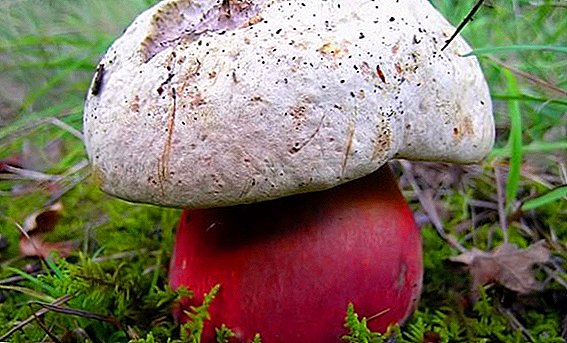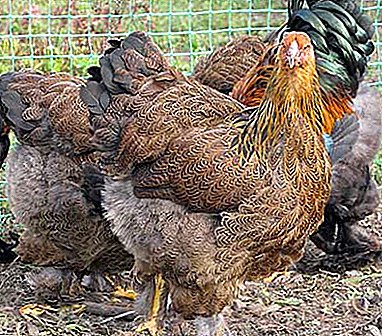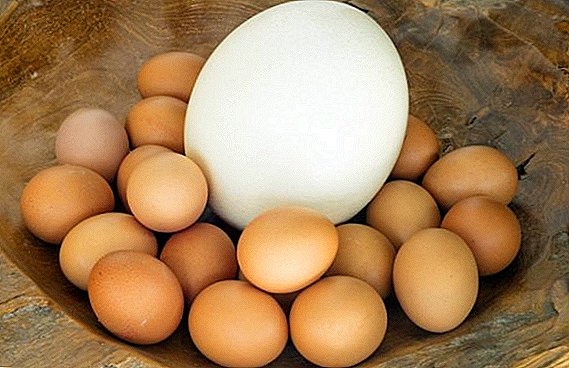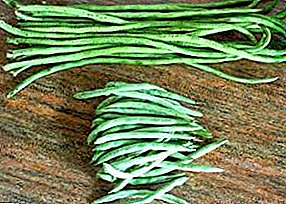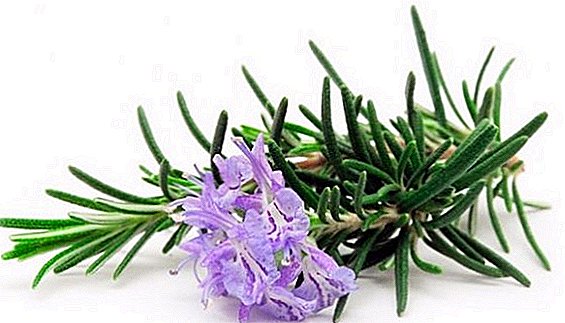 Rosemary is an evergreen, better known as a spice. However, rosemary is used not only in cooking, it has some healing properties and essential oils that perfumers and cosmetologists use.
Rosemary is an evergreen, better known as a spice. However, rosemary is used not only in cooking, it has some healing properties and essential oils that perfumers and cosmetologists use.
Rosemary: plant description
 So what is rosemary? This is a perennial shrub with leaves, needles, similar to pine needles. In the wild, rosemary is common in the Mediterranean. Under natural conditions, the shrub grows to two meters. The plant is thermophilic, does not tolerate frost, the temperature below 11 degrees is detrimental to it. During the flowering sprig of rosemary covered with flowers of blue, white, purple or violet. Rosemary has an interesting aroma: it is difficult to distinguish one smell from it. Here the aromas of eucalyptus, camphor, lemon and the smell of fresh pine needles are captured.
So what is rosemary? This is a perennial shrub with leaves, needles, similar to pine needles. In the wild, rosemary is common in the Mediterranean. Under natural conditions, the shrub grows to two meters. The plant is thermophilic, does not tolerate frost, the temperature below 11 degrees is detrimental to it. During the flowering sprig of rosemary covered with flowers of blue, white, purple or violet. Rosemary has an interesting aroma: it is difficult to distinguish one smell from it. Here the aromas of eucalyptus, camphor, lemon and the smell of fresh pine needles are captured.
In official medicine, rosemary is used in the preparation of drugs that stimulate the immune system, the essential oil helps to cope with inflammatory processes, normalizes heart activity and blood pressure. In folk medicine, memory problems are treated with it, since Rosemary aroma activates brain cells responsible for human memory.
Did you know? Greek students wore rosemary branches during the exam period, believing that the scent of the plant would increase concentration and stimulate mental activity. The Greeks believed that rosemary helps memorize words, numbers, and even complex formulas.
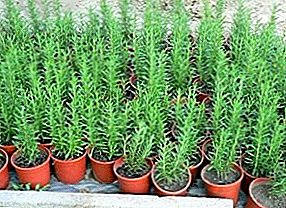 In cooking, it is a spicy seasoning used in marinades, pickles, in the first and second dishes, in roasting meat products, in salads, sauces, desserts and for decorating dishes. Rosemary is an interesting plant, the mankind has been paying attention to it since the beginning of our civilization. The ancient Egyptians used it in the preparation of incense, the Chinese - in aromatherapy. The first perfume with rosemary aroma appeared in 2800 BC. e., and still this fragrance is successfully used in perfumery.
In cooking, it is a spicy seasoning used in marinades, pickles, in the first and second dishes, in roasting meat products, in salads, sauces, desserts and for decorating dishes. Rosemary is an interesting plant, the mankind has been paying attention to it since the beginning of our civilization. The ancient Egyptians used it in the preparation of incense, the Chinese - in aromatherapy. The first perfume with rosemary aroma appeared in 2800 BC. e., and still this fragrance is successfully used in perfumery.
How to choose a place for planting a Mediterranean plant
If you are going to grow rosemary, note that the lack of light will affect the saturation of essential oils. With a low concentration of oils, its taste and smell will also be inexpressive. When planting, consider the location of groundwater, excess moisture will damage the plant.
Important! Rosemary-scented is more suitable for home conditions, it is less capricious and does not require careful care and attention.
Rosemary lighting and temperature
Since rosemary does not like temperature drops and cold weather, choose a place open to the sun protected from drafts for its planting. The most suitable for rosemary will be areas on the south or east side of the garden. In winter, you can transfer the plant to the balcony, but it will require good lighting and temperatures from 5 to 15 degrees. 
Selection of soil for the plant
The best soil for rosemary is light sandy, not acidic and drained. Such soils well pass water without delaying it. They are loose, which gives oxygen to the roots of the plant. If you have an acidic soil at the site, you need to lime it. To avoid excess moisture, lay drainage at the bottom of the landing hole (large pebbles, broken bricks).
How to plant rosemary cuttings
 Rosemary cuttings are carried out in September-October. At this time, annual shoots are stronger. Cuttings cut to a length of 10 cm, while they must have at least three internodes, cut the cut with wood ash. In warmer regions, rooted in greenhouses, in temperate climates use containers. When grown at home, you can put in a container of water, previously dipped in "Kornevin." When there are white roots, transplant in the ground.
Rosemary cuttings are carried out in September-October. At this time, annual shoots are stronger. Cuttings cut to a length of 10 cm, while they must have at least three internodes, cut the cut with wood ash. In warmer regions, rooted in greenhouses, in temperate climates use containers. When grown at home, you can put in a container of water, previously dipped in "Kornevin." When there are white roots, transplant in the ground.
Attention! If you put the cutting in the water, it is desirable that the container was made of dark glass. To disinfect water dissolve three tablets of activated carbon in it.
How to plant rosemary in open ground: pit for planting should be half a meter deep and the same width. The soil, if the natural composition is not suitable, prepare yourself. To do this, take the following components: leaf soil, peat and coarse sand (2: 1: 2). On 1 kg of the finished mixture, add powdered chalk - 25 g. Planting in open ground is carried out in early May, when the weather is stable and warm.
Growing Rosemary Seeds
In early spring, begin to sow the seeds of rosemary seedlings. Soil can be purchased at the store or cook yourself. Peat, sand, garden soil and humus will be needed for homemade substrates. The soil is moistened, seeds are laid at a depth of about four millimeters. The box or container is covered with foil. For three weeks, seedlings are transferred to a room with a temperature not higher than 5-7 ° C. Then - in a warmer place with a temperature of 10-12 ° C. The grown shoots are transplanted into pots, watered moderately and aired the room. Before planting in open ground (in May), the plant is hardened, leaving it in the air under the film.
 Rosemary can be planted directly into the open ground when grown from seed in the country. This is done at the end of April, after sowing they are covered with a film stretched over supports. The emerged shoots thinned out, leaving a distance of 25 cm between them. The film is removed when there is no threat of night frost.
Rosemary can be planted directly into the open ground when grown from seed in the country. This is done at the end of April, after sowing they are covered with a film stretched over supports. The emerged shoots thinned out, leaving a distance of 25 cm between them. The film is removed when there is no threat of night frost.
Rules for irrigation and rosemary bark
The main rule of irrigation is moderation, the water should be warm and defended. Feeding should not be carried away, fertilizers are needed only as stimulants of growth and development, and the plant produces food from the soil.
How to water the plant
The soil around the plant should be wet, but there should be no stagnant water. Water the bush as the soil dries. In winter, watering is regular and moderate. In the spring with an increase in temperature it can be increased. In hot weather with strong sun and no rain, watering should be frequent.
Features dressing rosemary
 Feeding rosemary should be no more than once a month. In the spring, during growth, he needs nitrogen. You can purchase mineral fertilizers or pour mullein infusion (1: 5 ratio). Nitrogen fertilizers stimulate plant rooting. In the autumn it is better to feed with phosphorus, it will strengthen the bush, and the plant will grow longer on your site.
Feeding rosemary should be no more than once a month. In the spring, during growth, he needs nitrogen. You can purchase mineral fertilizers or pour mullein infusion (1: 5 ratio). Nitrogen fertilizers stimulate plant rooting. In the autumn it is better to feed with phosphorus, it will strengthen the bush, and the plant will grow longer on your site.
Loosening and weeding, how to care for the soil
Rosemary after planting, like any plant, needs care. In order for the plant to be strong and healthy, you need to take care of the soil in which it grows. The supply of oxygen to the root system of rosemary provides soil loosening. With proper loosening, do not turn the layers of the soil, and break the crust on it. At the same time, weeds are harvested, which take food from rosemary. Even such corrosive weeds, such as wheatgrass or sow thistle, can be easily removed from the ground when loosening and weeding. The first procedure is carried out after the snow melts, when the soil begins to warm up. The loosening procedure is important, as rainfall is better absorbed by the loose, light soil, and there is more air. Soil loosening is carried out up to the winter period to a depth of 12 cm.
When the plant is pruned, the formation of rosemary bushes
 Rosemary is not afraid of pruning. You can cut off the branches for use in food during the entire period of its development. To form a plant, remove the branches that hinder the growth of others, weak or damaged shoots growing inside the crown. You can give it any shape. The procedure is carried out in late March - early April. At the same time, bushes that have grown in all directions, old and dry branches, as well as growing too high, knocking out of the general form, are cut off. If your rosemary has been growing for a long time, you can make a radical anti-aging pruning - to the level of the soil. Thus rejuvenate the bushes during production growth.
Rosemary is not afraid of pruning. You can cut off the branches for use in food during the entire period of its development. To form a plant, remove the branches that hinder the growth of others, weak or damaged shoots growing inside the crown. You can give it any shape. The procedure is carried out in late March - early April. At the same time, bushes that have grown in all directions, old and dry branches, as well as growing too high, knocking out of the general form, are cut off. If your rosemary has been growing for a long time, you can make a radical anti-aging pruning - to the level of the soil. Thus rejuvenate the bushes during production growth.
Rosemary Shelter for Winter
If your region has cold winters with temperatures below -12 ° C, you need to dig up the plant and maintain it at home. You can immediately plant in bulk pots and drip into the soil in the garden, and in the winter to carry in a cool, lit room. In this case, you can use fresh rosemary in winter. In the spring, when the threat of night frost passes, bring it back to the garden. The room in which the plant is located should be aired regularly, and if you grow rosemary at home, it should be turned towards the light from time to time to properly form the crown. For home cultivation is recommended to use pots from natural materials: clay, ceramics.
In the case of warm winters plant harbor. Pristvolny circle mulch and lay on sawdust, dry foliage and other improvised material.
Rosemary: Harvesting and Storage
 Fresh green rosemary, you can cut the entire spring and summer. Also, fresh herbs can be pampered if the plant overwinters at home.
Fresh green rosemary, you can cut the entire spring and summer. Also, fresh herbs can be pampered if the plant overwinters at home.
Harvesting takes place in the month of August. During this period, the leaves contain the maximum amount of oils. During the harvest, branches with leaves are cut off, tied in bunches and dried in limbo. The room should be ventilated and dark. The dried twigs are finely chopped and put in glass containers. When drying the plant, you can use the oven - it will save time, most importantly, glancing behind the leaves so as not to burn. Rosemary in this form can be stored for up to three years.
Interesting! In ancient Rome, rosemary was used in many ceremonies: at weddings, funerals, and at religious holidays. They were decorated with pagan temples, later Christian churches. Rosemary was a constant attribute in seance and magic sessions.
Rosemary can be used not only for culinary purposes, it blooms beautifully and will decorate any garden. Among the shrubs there are tall and miniature, blooming in different shades and with different size buds. To choose a suitable plant for yourself, it does not hurt to find out how rosemary of one sort or another looks. There are few varieties in the plant, and you can easily select the one that interests you.







